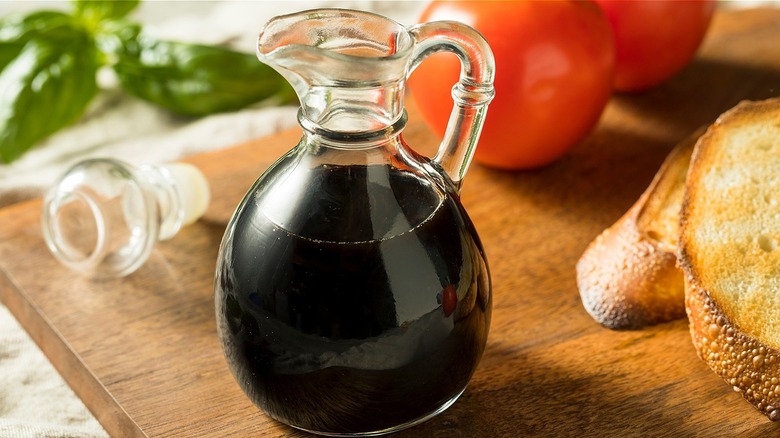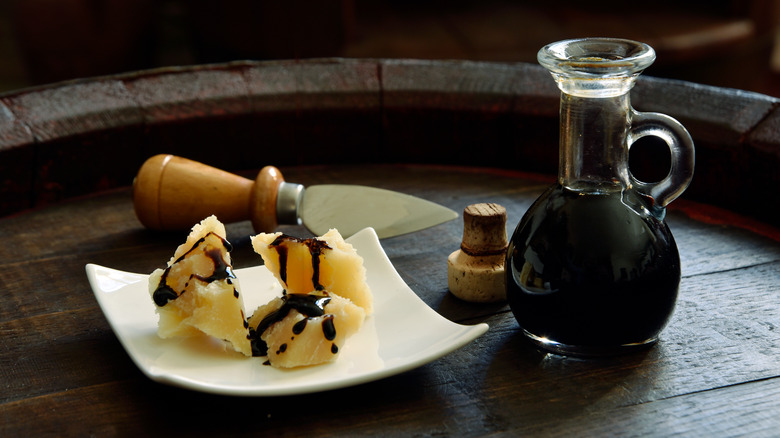The Secret Balsamic Vinegar Label You Should Always Look For
Balsamic vinegar can be found in many varieties at the grocery store and is a staple in most pantries. While it can be daunting standing in front of shelves full of vinegar, trying to choose the best one, deciding on a balsamic bottle can be made simple — you just have to keep an eye out for a few labels.
Choosing high-quality vinegar is best when looking for authentic flavor. However, this doesn't mean skipping over the affordable stuff. For example, Food Network star Ina Garten's Balsamic Vinegar of choice is under $20. The Barefoot Contessa is one of the leading names in the culinary industry, and yet the seasoned chef often cooks with affordable ingredients while teaching home cooks how to create delicious meals without breaking the bank. According to Serious Eats, unlike Garten, some chefs will spend hundreds of dollars on a single bottle of balsamic.
Ina Garten thinks cooking is really about gathering together with loved ones and getting to connect by sharing delicious food, rather than focusing on expensive ingredients.
Look for authenticity
Next time you're in the vinegar aisle, keep an eye out for DOP (Protected Designation of Origin) and IGP (Protected Geographical Indication) labels. These EU markers identify balsamic vinegar brands that have certified that their products are authentic, from Italy, and made under strict food regulations. Vinegar with these certifications don't have additives or coloring, which is something that cannot be guaranteed for non-certified vinegar.
Much like Champagne and Tequila, true balsamic vinegar can only be made in two regions of Italy to be worthy of the name. Produced only in Reggio Emilia or Modena, the rich vinegar is processed similar to fortified wines. Besides the DOP and IGP labels, you should check the ingredients list which should be short as actual balsamic vinegar only has one ingredient, grape must. According to Wine Spectator, grape must is the unfermented juice of grapes that is extracted by crushing or pressing.
After ensuring that your balsamic is from Italy and made of only grape must, it's safe to assume that it's a high-quality bottle. To get proper use out of authentic balsamic vinegar, keep it simple by drizzling it over veggies, fruits, bread, or cheese. If you don't have any on hand, here's what you can substitute for balsamic vinegar.

